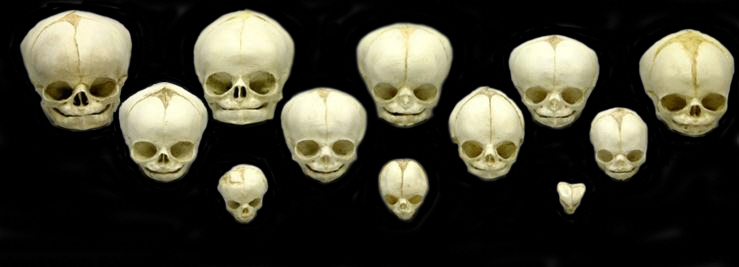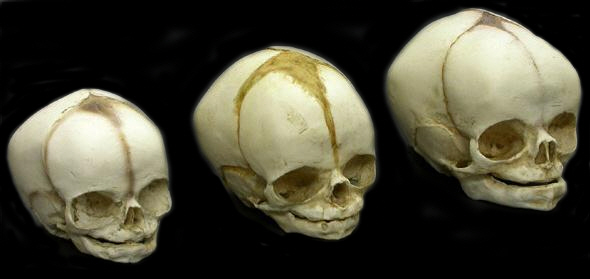






Anthropology - Reference Skeletal Anatomy




Main Index

Skeleton



Skeleton
Skeletons as Forensic Evidence
Cold Case Files are records kept for criminal cases that were never solved, often after several years. In some cases, however, a murder case may go years before it is even discovered. In these cases, most portions of the body will have long since either decayed or have been scavenged. The one portion of the body that takes the longest to decay is the skeleton. These cases would be, uh, cold, but in a different way . . . A person who studies skeletons in order to determine information about the person before she/he died is called a Forensic Anthropologist.
Despite the neglect the dead body endures, there are still quite a number of things that one can learn. First of all, in the area of the skull, one can determine many things. In terms of infants, we can determine the age, in weeks, fairly accurately by examining the development of the skull:
Cold Case Files are records kept for criminal cases that were never solved, often after several years. In some cases, however, a murder case may go years before it is even discovered. In these cases, most portions of the body will have long since either decayed or have been scavenged. The one portion of the body that takes the longest to decay is the skeleton. These cases would be, uh, cold, but in a different way . . . A person who studies skeletons in order to determine information about the person before she/he died is called a Forensic Anthropologist.
Despite the neglect the dead body endures, there are still quite a number of things that one can learn. First of all, in the area of the skull, one can determine many things. In terms of infants, we can determine the age, in weeks, fairly accurately by examining the development of the skull:

40 1/2 weeks
31 weeks
40 weeks
30 weeks
35 weeks
29 weeks
34 weeks
13 weeks
21 1/2 weeks
32 weeks
Notice, apart from the difference in size, how the fontanels (the soft spots that ultimately become the sutures, or fixed joints between the bones in the skull) change over time, gradually becoming smaller. One must, however, be careful. Take the following two images, and try to figure out the approximate age of the second image, after examining the first image.

Aged 31 weeks, 32 weeks, and 40 weeks (full term)
Copyright All Rights Reserved by Nigel G Wilcox E-Mail: ngwilcox100@gmail.com
Designed by Nigel G Wilcox
Complimentary Topics
The Paragon Of Metal Detecting
& Archaeology
& Archaeology
6. Menu
Pages

Powered By Sispro1
Member NCMD





















